The V8 is long gone – probably for good – but the Disco is back.
Not the Bee Gees. The Land Rover Disco.
No V8, though – but that’s ok. The supercharged V6 makes it easy to forget about the old (and it was really old) V8 that powered the Series 1 (1989-1998) and Series II (1998-2004) Disco.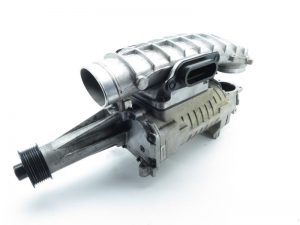
And there’s a new turbodiesel engine, too.
It’s one of almost none you can find under the hood of any new SUV.
WHAT IT IS
The Disco fills the slot in Land Rover’s lineup vacated by the retiring LR4 – which took the place of the Disco back in 2004.
It’s a full-size, 5-7 passenger luxury SUV that is also among the most capable SUVs available, luxury or not.
Don’t let the dual DVD rear entertainment system or the outstanding 14-speaker Meridian ultra-premium audio rig fool you. This is a machine that can go extremely off road – as opposed to striking an off-road pose.
Prices start at $49,990 for the SE trim with the supercharged 3.0 liter gas V6; HSE trims come with either the supercharged V6 or – if you prefer – a turbodiesel V6. The supercharged HSE starts at $56,959; with the diesel, prices begin at $58,950.
A top-of-the-line First Edition Discovery with the supercharged gas V6 stickers for $73,950. These are serialized (2,500 will be built) and come with unique interior and exterior trim.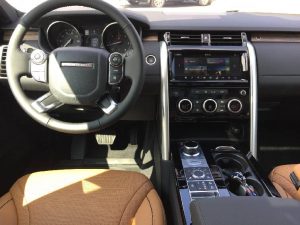
All trims come standard with a serious 4WD system – with multiple terrain modes. The trim/price differences are based on luxury amenities and technology – not capability.
The Disco has few direct competitors because there are precious few alternatives – luxury or otherwise – that have similar off-road bona fides and offer either a supercharged gas engine or a mighty turbodiesel V6.
WHAT’S NEW
The Disco name goes way back but the vehicle its affixed to is clean sheet, an all-new design that retains the essential elements – including a “stepped” roof to make for more headroom in the second (and available third) row and no-compromises made to its formidable off-road capabilities . . . but deals with the current political realities in extremely clever ways.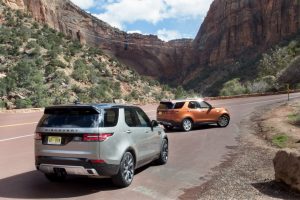
These realities include ever-more-demanding fuel economy regs designed, it seems, to force-retire V8s by making them too expensive to even offer in other than extremely high-end, low-production vehicles like the Disco’s stablememate, the Range Rover – which starts at $103,895 with the V8. That price guaranteed to keep production low and thus not run too far afoul of the government’s mandatory minimum fuel-efficiency fatwas.
But of course the people still want power – and at a manageable price
The Disco deals with this dilemma by bolting a blower – a supercharger – to a mid-sized V6, with V8 horsepower resulting.
Much more horsepower than the V8s in the Series I and Series II Discos. But without the regulatory kneecapping that comes with a V8 these days.
The supercharged V6 isn’t a gas sipper – but it it sips less gas than the old V8 – and that matters to manufacturers like Land Rover, given the regulatory regime, as much as horsepower and performance matters to the people who buy Land Rovers.
What will also matter to Land Rover buyers is that the Disco is much quicker – and hundreds of pounds lighter – and handles vastly better than the earlier Disco ever did.
And also better than the LR4 ever did.
If there’s a downside, it’s not easy to see it.
Supercharged V6. Blower whine. Instant thrust.
Fabulous sound.
Diesel V6 – and 443 ft-lbs. of torque. Grunt enough to pull more than 7,700 lbs.
Three rows of real seats.
Finger light steering at low speed; adroit handling at high speed.
WHAT’S NOT SO GOOD
No defroster grid embedded in the windshield. Most Land Rovers have this very-helpful-in-winter feature.
Or at least, they did.
Wish the blower whine were less muffled.
Two un-run-of-the-mill things about the Disco:
Supercharging – and diesel power.
Neither are common – despite both being desirable.
Supercharging is better than turbocharging, in several ways. One way is that it’s immediate boost because the blower is engine-driven, like any other accessory. Even though great strides have been made with turbos – with reducing the lag time before the boost builds and acceleration happens – there is still noticeable lag, most of the time.
And why?
Because with a turbo-boosted engine, boost must build. The turbo is exhaust driven. And the boost doesn’t build until after the exhaust pressure begins to turn the little wheel inside the turbocharger that in turn pressurizes the incoming air charge. But exhaust pressure has to build before boost pressure builds.s 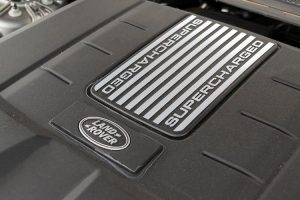
The blower’s response is immediate; the surge of boost right now.
The blower is also simpler. Fewer parts – and the parts do not have to work in the extreme high-heat environment that turbochargers necessarily must deal with – being necessarily installed in the exhaust system, usually right up near the engine, where it’s the hottest.
Blower also work with less boost – 6-8 pounds or so is typical. Versus the now routine 20-plus pounds of boost many turbos cram down the cylinders of the engines they are bolted to. This makes for lots of power – and (sometimes) not long life. An engine can be built to withstand these higher pressures, but the higher pressures are the inevitable enemy of engine longevity.
So, 340 hp at 6,500 RPM and 332 ft.-lbs. of torque beginning at 3,500 RPM – maintained through 5,000 RPM, courtesy of the steady diet of boost. It all feeds through a eight-speed automatic and full-time 4WD, which sounds heavy – but the thing still bullets to 60 in less than seven seconds.
In part because of the boosted V6, but also because of the lightened Disco. Its all-alloy body is about 700 lbs. lighter than the LR4’s (4,916 lbs. vs. 5,655 for the LR4).
It almost makes you want to say Oh, behave!
Which is actually appropriate because the blown V6 is shared with Jaguars and the aluminum bodywork, too. Well, the concept of it. It is, after all, Jaguar Land Rover (one company) and the usufructs are general.
Or go turbo – and diesel.
The horsepower is less (254 at 3,750 RPM) but the torque is much more (443 ft.-lbs.) and a lot sooner (1,750 RPM). To put these number in some perspective, the Disco diesel V6’s horsepower is considerably higher than the old Disco’s ancient, GM-derived V8 ever made (217, for the Series II) and its torque is comparable to the swell produced by the stoutest V8 big blocks of the muscle car era. The 455 cubic inch (7.4 liter) V8 in my ‘70s Trans-Am, as a for-instance, only made about 345 ft.-lbs. of torque when it was new.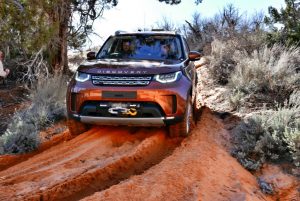
And – trust me – the 455 isn’t capable of 21 city, much less 26 highway – the diesel-powered Disco’s EPA numbers. Nor can my TA pull almost 8,000 lbs. – which the Disco can.
It can also get to 60 in 7.7 seconds – which is almost exactly as quick as my 455 TA muscle car was when it was new back in ’76.
All Discos have the same ultra-capable full-time 4WD system, with multiple selectable terrain modes and 8.6 inches of ground clearance. If you opt for the air suspension, you can jack the thing up 11.1 inches via a console mounted switch.
ON THE ROAD
The blower Max, the blower!
Some will get the reference. It’s from the original (Mel Gibson) Mad Max movie. His mechanic buddy has built him the ultimate Interceptor – with a de-clutching supercharger. Max’s eyes go wide as the throttle is goosed and the engine howls.
But of course, the Interceptor couldn’t go off-road.
This one can.
If only the blower were a bit louder. Still, you can hear it. That very specific keening sound that only a supercharger makes. It is a lovely sound. Menacing and beautiful at the same time – kind of like Wagner. The hair rises on the back of your neck when you hear either, just the same.
Also Wagnerian is the Disco’s acceleration. It needs a helmet with wings on the side of it. 4,900 lbs. empty and it jumps to 60 in less than 7 seconds. Others may be quicker – but when the pavement ends . . .
And that’s what makes this thing so . . . operatic. What it can do on road is matched by what it is capable of doing off-road.
And that is no small thing.
But it is an unusual thing.
Like the blower under the hood.
Difference, personality, capability – and character.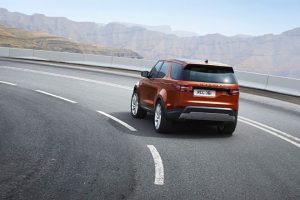
The Disco does not drive like any other SUV. The experience is immediately distinctive. Not just the blower and that fabulous background keening. It’s light on its feet, poised. Agile isn’t editorial excess. The steering feels overboosted at first, at low speed. But this changes as speed increases. Effort increases, just enough weight to give feedback. It’s as easy to steer into a tight spot when you’re barely moving as it is to steer it through an apex when you’re really hauling – which it will do without the Heaves and without herky-jerky stability control intervention.
It lacks the on-road oafishness in the curves that usually comes with serious off-road credentials. The Disco is as easy to live with every day as a Camry.
Better.
Or, that diesel.
And the rest.
Like the Meridian sound system, about which more in a moment.
This thing is the total package. I don’t say that often. I don’t think I’ve said it in years. But it needs to be said – it must be said – about the Disco.
AT THE CURB
The LR4 (RIP) looked more like the original Disco – especially the signature stepped roofline – which is now just hinted at in the profile of the new Disco.
But the space is still there. More of it, in fact.
It is now almost as large as the Range Rover – just not as heavy (or as expensive) and with more room for people (the RR seats five only).
The Disco is 195.6 inches long overall – which is just 1.2 inches less long than the RR and 5.2 inches longer overall than the LR4. It rides on the same 115-inch wheelbase as the RR – and is otherwise dimensionally similar.
But it’s arguably more space efficient – especially if you need a third row.
And that third row is adult-friendly, a very rare find outside of Leviathan Class SUVs like the Cadillac Escalade ESV or the extended wheelbase Lincoln Navigator – and neither of those even pretend to be off-roaders. The Caddy hasn’t even got 4WD Low gearing anymore – and don’t bring up angle of departure/approach, either. There’ll be plastic chrome bumper all over the road.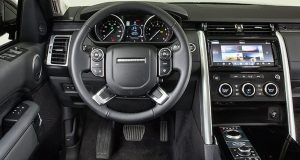
The Disco has 39 inches of legroom up front, 37 in the second row and 33 in the third – but it’s the headroom that makes that third row more-than-teenager-viable. It’s only about an inch less than in the second row (37.8 inches vs. 39.02) even with the panorama sunroof.
The Disco also has more cargo room than the standard wheelbase RR – and virtually the same as the long-wheelbase RR: 45 cubic feet with the second row folded; 82.7 cubic feet with the first and second row folded – as opposed to 32.1 for the RR with its second row up and 71.7 with the second row down. The long-wheelbase RR (which is eight inches longer) maxes out at 82.8 cubic feet.
It does offer executive-style reclining rear seats (with swing out dinner tables) but horses for courses. The RR is a different animal. Both it and the Disco are luxurious and capable; the Disco simply lets more people experience these things at one time.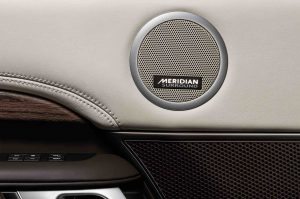
This includes, as an aside, the words-are-inadequate Meridian audio system. You need not be an audiophile to appreciate it. The clarity and depth of the sound produced is so real it’s unreal, almost. Cue up Tannhauser. The Berlin Philharmonic appears. Joan Jet is in your lap – the Blackhearts in the back seats.
Seriously.
I don’t hate myself for loving you.
Some general coolnesses: There are nine USB ports, so no one will ever go unplugged.
You can configure the second and third row positions remotely, via your phone – so as to prepare the vehicle to accommodate people or cargo or both.
There is a FitBit-style waterproof activity bracelet you wear so you don’t have to carry keys with you – or worry about them getting wet. You leave the keys safely locked – and dry – inside the Disco.
Well, the windshield hasn’t got the embedded grid heater system that LR vehicles used to have and which the RR still has; also several Jaguars, including the F-Pace. This feature – unlike so many “safety” features crooned over by most car journalists (but not me, because many of these features amount to presumptive idiot-proofing and I like to assume you are not an idiot) this one has functional value even if you are a superb, attentive driver. It clears the windshield of ice on cold days without you having to chip at it with an chisel – and keeps ice from forming as you drive on cold days.
It’s an excellent feature – and LR ought to bring it back.
The other thing is just a quibble. The blower is too muffled.
Good news, though: You can remedy this yourself, without in any way harming the Disco or your warranty. Just pop the hood and remove the plastic acoustic cover they pop onto the engine.
You will be very glad you did this.
Final thing: There has been some catcalling from the bleachers about Land Rover’s decision to go unibody across its model lineup – as opposed to body-on-frame construction, which is regarded as tougher. But unibodies can be very tough, too. Jeep Grand Cherokees don’t seem to be gimped, nor Porsche Cayennes – and unibody design have the advantage of being lighter and much more tightly put-together. Fewer squeaks and rattles.
Rest Easy. Nothing’s been emasculated here.
You get balls – and finesse.
THE BOTTOM LINE
I’d pine for the V8 – if the blown V6 didn’t make me forget all about it.
The diesel’s not a bad gig, either.
And both are the only games of their kind in town.
. . .
Got a question about cars – or anything else? Click on the “ask Eric” link and send ’em in!
If you like what you’ve found here, please consider supporting EPautos.
We depend on you to keep the wheels turning!
Our donate button is here.
If you prefer not to use PayPal, our mailing address is:
EPautos
721 Hummingbird Lane SE
Copper Hill, VA 24079
PS: EPautos stickers are free to those who send in $20 or more to support the site. Also, the eBook – free! – is available. Click here. Just enter you email in the box on the top of the main page and we’ll email you a copy instantly!




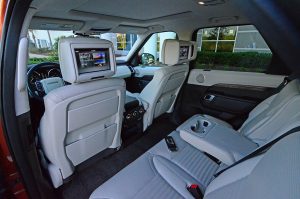



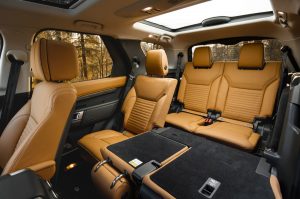
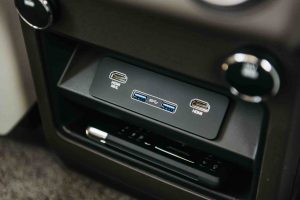








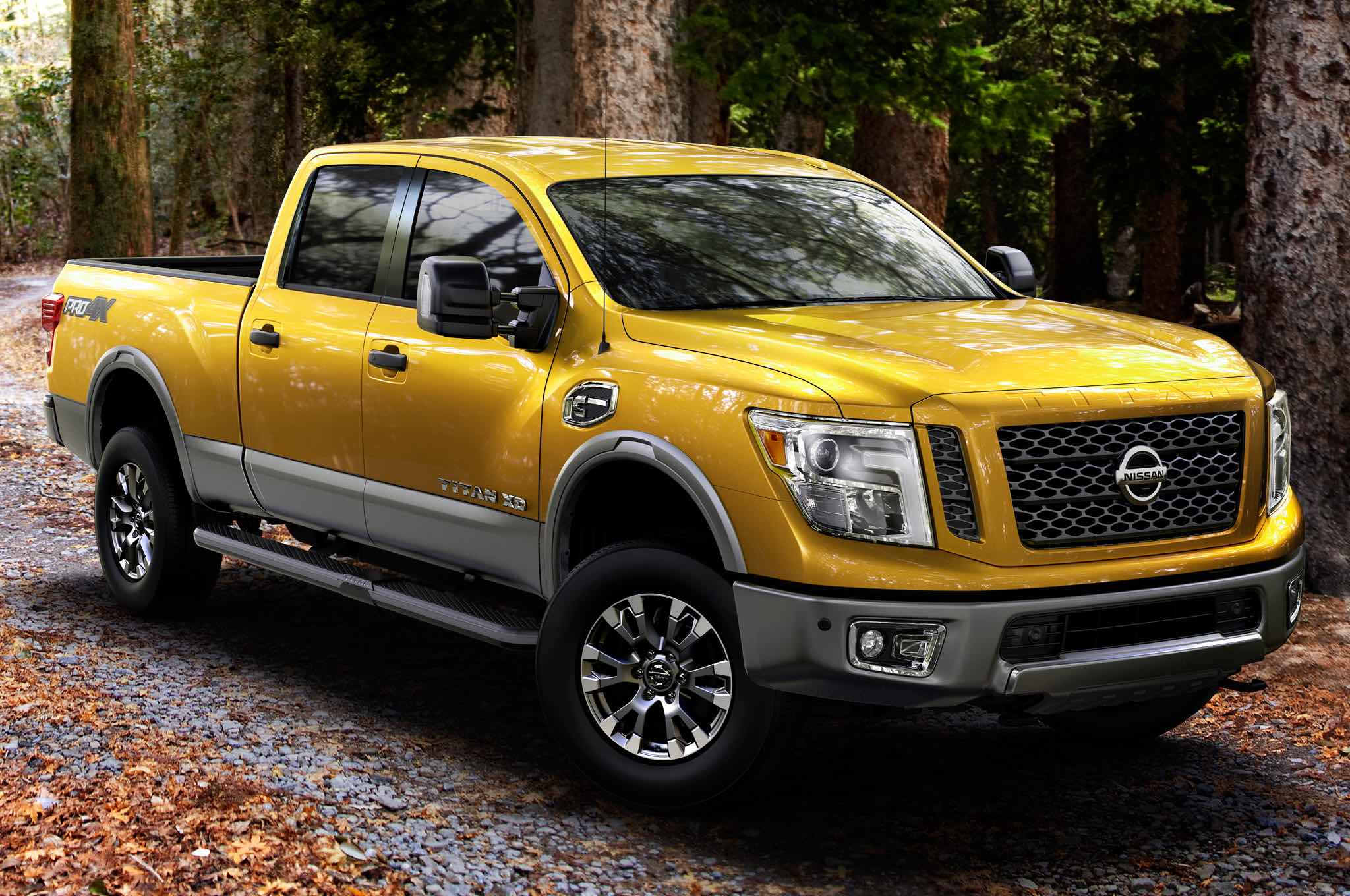
Another thing I am surprised we don’t see more of is cylinder deactivation for CAFE style fuel “savings”. I know some of the Hemi’s in Dodge Chargers have it. Or is that something that is only possible with engines with 8 or more cylinders, so since they are largely extinct already we won’t see any more? Or is this the next trick the automakers will have to try with these tiny 4 cylinder engines to get to 54.5 mph?
Cylinder deactivation is a pretty common strategy AFAIK.
As far as the “next trick” I saw this the other day – https://www.autoblog.com/2016/08/26/epa-allow-higher-octane-gas-2025-fuel-economy-emissions/.
Nutshell version; “Automakers are pushing for higher-octane allowances as a way to help boost fuel economy via the proliferation of higher compression engines.”
I know I wouldn’t mind seeing 100 octane available at the pump again.
I didn’t buy a Honda Ridgeline because a) way too expensive, b) cylinder deactivation and c) nagging red/green light band around the gauges to train you how to drive like you have an egg under your foot.
The cylinder deactivation was especially disturbing because the way Honda does it they shut both valve sets creating an air piston. That creates a vacuum on the “downstroke” and invites oil to leak past the rings. In cases where people do a lot of highway driving (or have an egg under their left foot), it means you might have to add a quart of oil every fill up. With today’s engines you’d better use the right oil too, so not that recycled crap from WallMart either. And of course fouled plugs and valves too.
http://www.hondaproblems.com/trends/excessive-oil-consumption/
“In fact, if your commute doesn’t consist of climbing through the Rockies, you’re probably going to see more oil consumption than normal.” – Honda TSV on oil consumption problem.
That site is fairly old but going through the Ridgeline forums while researching I came across people with Pilots who still had the oil consumption problem on fairly new vehicles. There were also complaints about excessive vibration (the active engine mounts fail) and confused computers constantly switching between 3 and 6 cylinders. Honda seems to be especially flawed because they’re trying to make a V6 into a ?? 3 cyl engine without trying to counter balance the driveshaft.
But the idea is fairly flawed anyway. unless you can completely remove a piston and still somehow keep the engine balanced, there’s not much to gain and a lot of added complexity. It might be interesting to have a dual-engine setup, like Bugatti’s W-16, where you shut down one whole driveshaft, but then getting the thing going again and synchronized is going to be complicated too.
Hi RK,
Hat tip on the cylinder deactivation issue – that’s bad news, indeed. Like you, I loathe all this “nudging’ technology. How about leaving people alone? The Fuel Economy Cult is as annoying as the Safety Cult – and both are led by priests and priestesses who do not represent anyone except themselves.
People are likely to cross-shop the Lexus GX. It’s just as formidable off-road (It’s really a LandCruiser Prado under the wood & leather seats) but it has a V8 and is body-on-frame.
However – that diesel changes everything. Way more torque than the Lexus 4.6 liter and it gets far better fuel economy. Lexus needs to drop the 1VD-FTV twin-turbo diesel in the GX to be competitive.
Now if only Land Rover can turn around their reliability…
Hi Chip,
I like the GX a lot; it is a great off-roader, too. But its handling is oafish, as you’d expect of an older-design, real-deal 4×4 SUV. The Disco is vastly better on road, in the curves especially.
The depreciation curve on Land Rovers resembles a cliff for a reason. If only the Disco’s features could find their way into an even moderately reliable package. Many buyers (including me) will stay far away until this company can demonstrate a better reliability profile. I hope this vehicle can help LR demonstrate a change in direction, but I am not encouraged by the expensive, failure-prone gadgetry visible in your video. History repeats, I fear.
Hi Konig,
Yes, indeed. Of course, the depreciation curve is also steep for other high-end vehicles generally. Part of this is due to the value of them being tied up with being the “newest/latest” thing; people in this demographic usually keep the vehicle 2-4 years, then get . . . the newest/latest thing. This results in steep decline in value of the no-longer-newest/latest thing.
And you’re right about the gadgets – but this is also a common problem across the luxury-brand spectrum. These cars are (my opinion) overteched to an extreme, in order to justify their cost vs. the lower-priced stuff.
They are none of them built for post-warranty long-haul trouble-free driving.
You are, of course, right about “owner-flipping” behavior and “over-teching” to justify pricing. But, I think Land Rover now occupies a special place in the automotive marketplace that is distinctive, in a negative way, on the reliability front. See Doug DeMuro’s Range Rover warranty update videos on YouTube. And this from a company that originally built it’s name building rugged, repairable vehicles suitable for extreme conditions. No, the reason LR’s depreciation curve looks the way it does is because people like me (who should be the logical market for the 2-4 year owner-flippers to sell to) won’t touch LR’s vehicles. Here’s hoping the new Disco proves me wrong.
Hi Eric,
I think the car built for long term reliability was the defender….. that was a proper off-road car that can last through the apocalypse…….. They say most of the ones ever made are still in use…. sadly this is another car forced into retirement by dear beloved Uncle…. through endless safety and emissions regs. That said, I have really keeping my hopes up for the new defender…….. should be out end of next year…
72K miles seems to be the cutoff point. Something happens to the electrical system. Electric door locks suddenly stop working, windows get stuck half open, radio cuts out, etc. Take it to the normal wrench and he won’t touch it. Have to go to the expensive foreign specialty shop or the dealer. Oh well, didn’t need to use the key fob anyway…
A unibody “SUV” is ideal for people that are all about image without sacrificing comfort and on-road performance. These buyers rarely take these things off-road. They are also obsessed with gadgetry, which these things are loaded to the gills with. That pretty much defines the majority of SUV buyers.
For folks that actually use their SUVs like a truck on a daily basis, body-on-frame construction is absolutely necessary. Body-on-frame gives the vehicle torsional strength, which is great for towing and off-roading. Body-on-frame is also easier to repair and modify. SUVs with body-on-frame construction don’t need fancy adjustable air suspension, off-road modes, and other elaborate technology like unibody SUVs must have in order to be a viable off-road vehicle. Those things just add more to the already long list of things that can fail on a modern vehicle.
Hi Handler,
You’re absolutely right about easier repairability and towing; that said, unibody SUVs can be – and several are – extremely capable off road, including this one.
The fancy drive modes and so on are becoming ubiquitous, incidentally – body on frame models, too. Just as electric 4WD has replaced simpler, less expensive and less failure prone manual locking hubs.
eric, I have an ’83 Wagoneer in my dead line, mainly because the guy who owned it let some irresponsible friends borrow it and run it low on oil and the bend hell out of the body backing it into a tree. But that thing had the expensive 4WD package(I think Selectrac). It would cruise all day in snow at top speed(100) or grind up the baddest stuff you ever experienced in low range. When they first started building them a few had GM 400/400 combos and were definitely the one to have. The 360/Torqueflite was definitely second best. That was a nice machine, very comfy and rode great. It had only one major flaw, an air leak in the rear somewhere, probably where a plug was supposed to be but Lee wanted to save money. I knew several people who had these and every one of them leaked in the back. No big deal on the highway, not even noticeable but spend much time on a dirt road and you’d be choking out. And dogs, mang, they were like Playboy models to Jimmuh Carter, they lusted in their hearts for them. Never saw a dog that didn’t try to get in one when stopped. Never saw anybody have to say “Come on, get in, let’s go”. It was more like “Ok, we’re home, get out…..get out….ok it’s your funeral” and then shut the door. Next time you looked they’d still be in it, nearly dying of heatstroke but refusing to jump out.
Yesterday I burned a vacation day and went for a drive on some back roads. Not rock climbing or fording rivers, just on dirt and some single track. The Cherokee did just fine and I’d say I was able to better maintain speed and control over washboard much better than I can in the F-150, even with a topper and a load in the bed. Didn’t need to change the 4WD mode (the road didn’t call for it), so probably not a good example, but still nice that the rear end stayed planted the whole day.
Hi RK,
I went off-roading with LR in Canada and have also driven unibody Jeeps off-road. If there are weaknesses, they weren’t evident in terms of the ability of these vehicles to negotiate some hairy terrain and not get stuck or break.
Handler is absolutely right about the repair costs of fixing a unibody if you wreck one… but as far as off-road capability, they seem to more than handle their own. If this were not the case, Jeep and LR people would be up in arms as these models are all about capability. If that had been gimped, we’d know.
That’s really my only concern about these – long-term durability. I just don’t think they would hold up very well if they were treated like trucks. They’re fine for occasional use, but not for off-roading and/or towing on a daily basis.
My brother owned a Grand Cherokee equipped with a Hemi, and I immediately fell in love with it. It was absolute perfection, but part of me knew it was too good to be true.
That’s the problem with expensive transportation. I need a vehicle to be a mullet: business up front, party in the back. But like a mullet in practice a Jack of all trades isn’t necessarily pretty. That’s why the old timers who have land and money always have several vehicles. One for hauling s*** around the ranch, one for goin’ to town on Saturday, one for the 5th wheel and horse trailer, and one or two for the Mrs. Oh and that other one that sits under a tarp from that time he got a wild hair and thought he was Hugh Hefner…
Those of us who didn’t pay attention in math class have to try to live with one vehicle that does everything half-assed. If I were out in Moab every weekend I would have a vehicle more suited to off road, but the 4-5 times a year I travel on single track probably won’t do much long term harm, if I’m careful. And when I get back on the highway I get a nice ride.
Hi RK,
It’s a shame other manufacturers can’t imbue their offerings with the verve this Disco’s got – leaving aside the off-road credentials. I wish other MFGRs would go with superchargers, as a for-instance. And given how relatively inexpensive good audio is today, a rig like the one in the Disco should be available in less expensive models.
Audiophiles – seriously. The Meridian system is possibly the best sound reproduction system I have experienced in all my years of playing with new cars. If you like music, you owe it to yourself to try it out.
Hi Handler,
I’d want a body-on-frame truck for serious towing and work, too. No question. But off-roading is a different scenario and while body-on-frame has some advantages (especially repairability) the unibody layout hasn’t shown itself to be less capable, in terms of getting through and over things. We also must take into account the specific vehicle – and how the rest of it is set up. The LR’s 4WD system, as an example, is absolutely superb and an advantage in and of itself. Also the LR’s angles of approach and departure, ground clearance and so on.
LR – like Jeep – hasn’t diluted or diminished the capability of its vehicles. To do so would mean death for the both of them as their off-road bona fides are pretty much the foundation of their reputation. Take that away and they’d be – as you yourself said – just another crossover! 🙂
Yes, I know they can be very capable off-road. It’s just long-term durability and repairability that have me concerned.
By the way, I hope you get your hands on the new Range Rover Velar. That is one sexy machine!
They say they are going to send me a Velar!
Unlike GM, LR doesn’t care whether I am “diverse” – only that this site has an audience.
Perhaps the Disco has Few Competitors because it doesn’t offer what the market wants at that price point.
It looks like a Ford Explorer. Not like that’s an especially Bad Thing…….but not very aspirational.
It accelerates like a Honda Pilot (well, maybe a little slower.) Not like that’s a Bad Thing…….but…..
It’s does have “English Car Ambiance,” “nine USB ports,” and a Fitbit activity bracelet. if that’s what you’re looking for, snap up one of these puppies before all 2,500 are gone. 😉
Hi Mike,
You well-know I’m gimlet-eyed when it comes to the bleak homogeneity of almost all new vehicles. But not in this case. The Disco does not drive or feel or sound like an Explorer or a Pilot. I wish I could do a group side-by-side test drive for all EPautos regulars (wouldn’t something like that be incredible?)
The Explorer and Pilot are both nice vehicles but outclassed by this thing on numerous tangible and intangible points. As should be so, of course, given the price difference.
This is a case pf getting what you pay for.
For once!
Why do you think the industry is using turbos more then super charging? Guessing cost, though if supercharging is simpler wouldn’t it be the less expensive?
Hi Rich,
It may be that blowers are not as practical on four cylinder engines because of the mechanical power they draw. Superchargers are also probably more expensive.
Blowers can’t make up for altitude, a big deal if you’re not at sea level. You give up the same percent of power with a blower as a naturally aspirated engine as you gain altitude. Not so with a turbo since the thinner the air the faster it spins.
Turbo’s are the real deal and as I suspected, the car makers aren’t going to make good turbo’s or not so far they aren’t. Cheap cars=cheap turbo systems. Turbo’s made onto the exhaust manifold give up nothing as far as hot, fast turbo reaction but simply give up due to too much heat.
We saw the big 3 go through this on their diesels, Ford being the one to verily cook the turbo if you didn’t properly cool it when shutting one down. Cummins already knew all this and convinced Dodge to not fudge just as the Japanese advised GM.
I recall when engine idle timers were all the rage for Powerstroke aficianado’s to cool the turbo down before engine shutdown. Don’t know why Ford insisted on cutting corners since everyone they had make a diesel for them already knew this.
Back to cars though. Spend a few cents and get the turbo away from exhaust heat and insulate the exhaust tube and you have a turbo that will live and work fine. We’ll see cars continue to lose turbos in my opinion since bearing needs have been known a long time…..but how many makers are going to go the extra dollar for the good ones and the proper oil supply to see they stay cool.
I haven’t inspected a car turbo system since a friend had a turbo Volvo which was made correctly. I’m guessing though that even the expensive cars won’t have the right combo of these parameters and they’ll give it up just like the cheapest ones.
A turbo is a beautiful thing, giving you power and economy if you design it correctly, something a supercharger can’t do although the superchargers of today are hugely better than in the past.
But a turbocharged engine needs a charge air cooler(intercooler)….properly sized. I figure we’ll get to see who’s done it right and who’s just going to hope the turbos make it past warranty. In a lot of environs that means cleaning the intercooler and radiator….and oil cooler regularly. I’d bet money the heavy foot crowd won’t fare very well.
Hi Eight,
Doesn’t supercharging make up loss of performance at altitude? Both the supercharger and the turbo force more air (oxygen) into the engine, right? And the ECU adjust the A/F ratio to compensate for altitude. Yes?
I can see how lean-out could be disastrous with a supercharger or turbo if the engine is fed by carbs. But with ECUs and EFI?
eric, makes no difference what sort of fuel delivery you use, altitude in a normally aspirated vehicle or a blower are both limited by thin air.
Back when the earth’s crust was cooling and I used the old 2 cycle Detroit Diesels(cause that’s all they made)the blower force-fed the engine. Back in that day the ubiquitous 6-71 blower that racers used got their moniker from a 6-71 Detroit Diesel engine. Detroit named their engines after the configuration so a 6 with no V meant it was an inline 6 cylinder and the 71 denoted the size of the cylinder in cubic inches, hence the 6-71 blower. Detroit began making the “T” engine because the non-turbo engines lost enough power at higher altitude they simply weren’t suited for it. The “T” designation denoted a turbo.
Once Detroit came out with the 72 series almost all were turbo or T…along with being blown, and some were dubbed “TT” for turbo with intercooler. I can’t tell you why it took so long for intercoolers to be standard fare on turbo diesels but they weren’t for many years.
The main difference in some engines like Cummins made was the intercooler. A “335” Cummins was a strong engine but you better have a pyrometer and watch it or have a light and buzzer also when the exhaust temp exceeded 1200 degrees. For the most part, once intercoolers became standard then keeping an eye on the pyrometer wasn’t as important. Having said that though, even new trucks…..or some models…..still have a pyrometer since things can happen to reduce the efficiency of the intercooler like dirt and bugs and other detritus that build up in it just like a radiator or oil cooler.
I didn’t use my first truck beyond the high plains and didn’t know anyone who did use a non-turbo above that altitude. Get a load up on the plains and you noticed a difference in power once you were off the caprock. All the way to the coast they gained power. Cool nights(as compared to hot, dry days at altitude)near the coast felt like one had gained 50 HP…..and maybe they had. That mad buzz a blown Detroit made became a real power sound at sea level and high humidity since both increased the density of the intake air.
Turn off 36 onto I-10 and yeehaw, gimme some room to run cause this old 6 just got a new lease on life. You could hear those old Detroits 10 miles away and you could tell the difference in their power from hearing them on the plains.
Ak Miller has a book on turbocharging. When I was a teen it was right there with the Playboys…..and it never got old. Ak is one reason GM has a leg up on their competition. Not many people are aware how far back GM fooled around with turbos but I’m sure you remember the turbo Corvairs eric…..and they came after a good decade of experimenting on various engines. They were good cool weather runners and a good way to seize an engine in Texas summer heat but boy howdy, would those suckers run.
I recently found a YT video of an old 12V-71(2 blowers) in a truck. Boy, did that bring back memories….and they were screamers too.
You can compensate for altitude on a supercharger by changing pulley sizes (a.k.a. spin it faster). Not necessarily the most practical thing in the world though I have seen modular pulley kits that make swapping a 5 min. job.
As I understand it, superchargers generally outperform turbos in low boost setups (<10 p.s.i.) since the back pressure created by a turbo setup decreases efficiency on the low end of the boost scale. There is also no lag with a supercharger (great for the dragstrip).
Most factory ECUs have a limited percentage of correction to fueling (15% +/- comes to mind) so even with EFI it it still easy to grenade a poorly tuned combination, especially if you get something important wrong like insufficient fuel delivery (pump/lines), injectors sized to small, or get greedy with ignition timing.
I never understood why someone doesn’t make a CVT set up based on ambient air pressure for a blower. It would then perform like a turbo.
As far as turbo lag these days, it’s not an issue. The beauty of a turbo is it’s not parasitic and automatically adjust to altitude and load. Put your foot into it, boost pressure increases as fuel is fed and more fuel can be fed as the pressure increases.
You can use a boost bypass valve on a supercharger to establish the desired boost level, just like in a turbo application. The benefit is that at light throttle (no boost/cruising) there is a great reduction in parasitic hp loss.
I would argue that a turbo is parasitic (there is no free lunch) in that it increases backpressure on the exhaust. As I understand it, once you start to exceed 10 psi the benefit outweighs the downside of exhaust restriction in turbo applications.
Makes me want to look at one 🙂
I bought a used 2012 LR4 back in 2012 and it’s been pretty good. After about 130,000 miles, my biggest gripes are with the additional electronic crap. The electronic parking brake nearly left us stuck a few times, as it no longer releases; cost in parts alone to fix is over $1000, so it doesn’t get used any more. The parking sensors are flaky and often false. The rear lift gate (another electronic actuator) has been fixed a couple of times and feels like it will need fixed again soon. The computer sometimes needs reset to use the auto up/down feature of the windows.
The only engine issues were fixed under warranty – a leaking water pump and one of the high pressure fuel pumps failed.
Hi Michael,
I am gonna put up a video of the sound without the acoustic cover on!